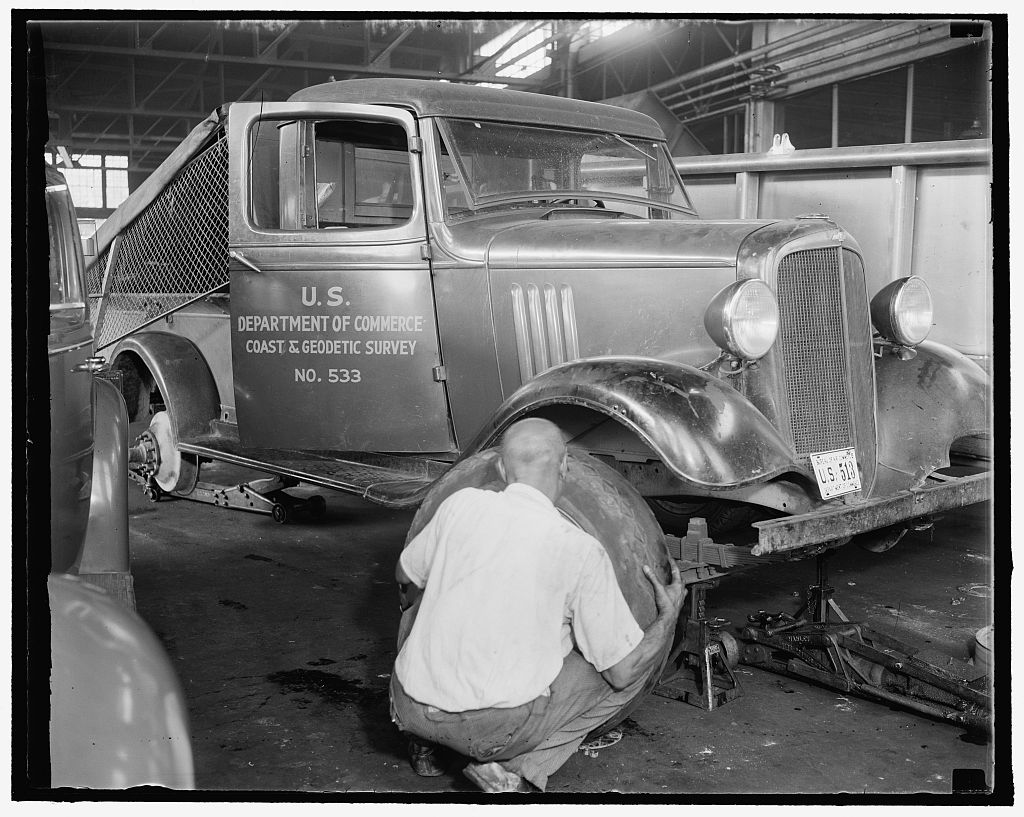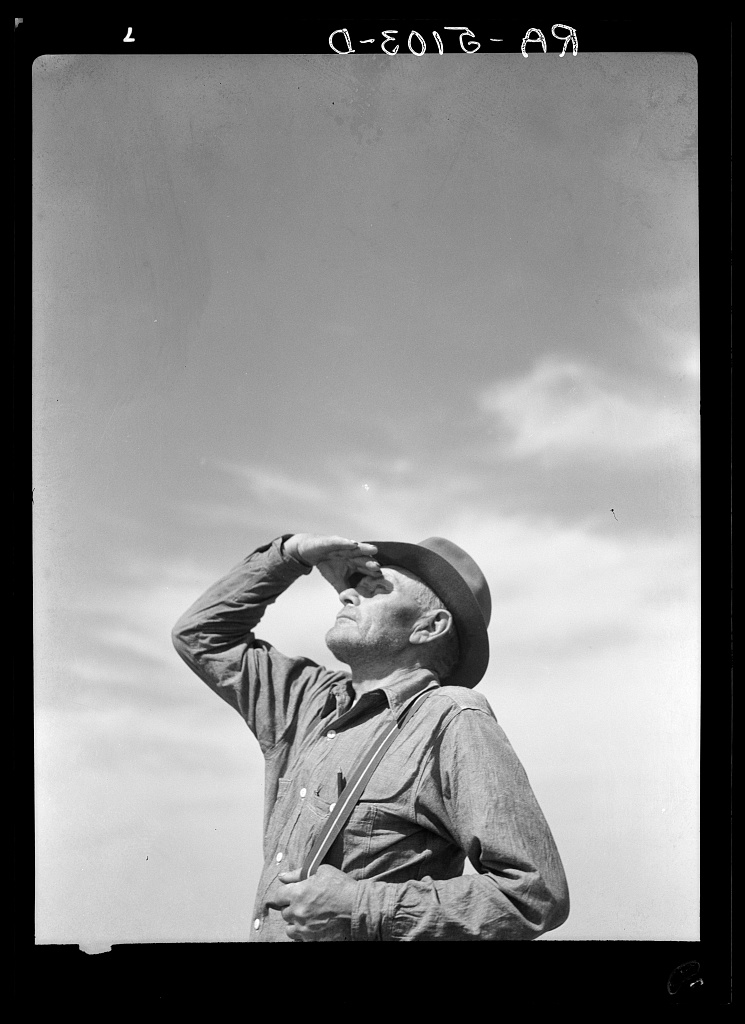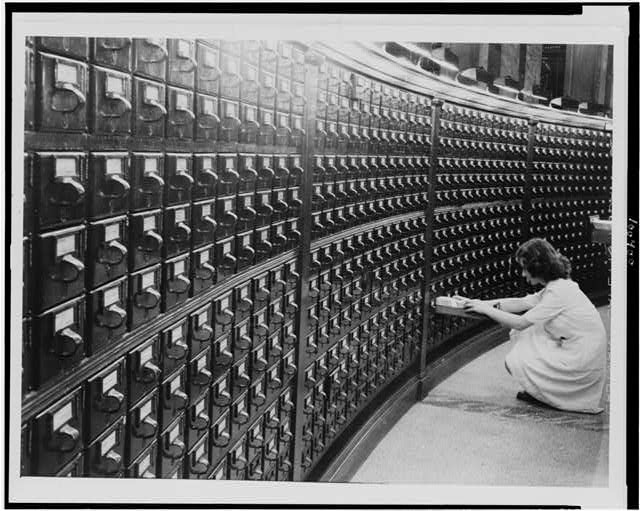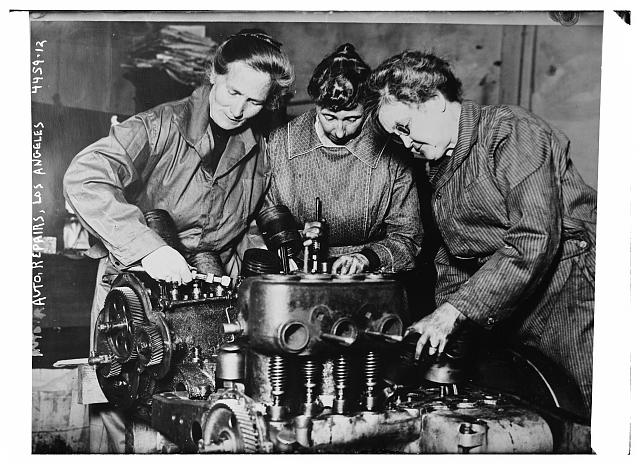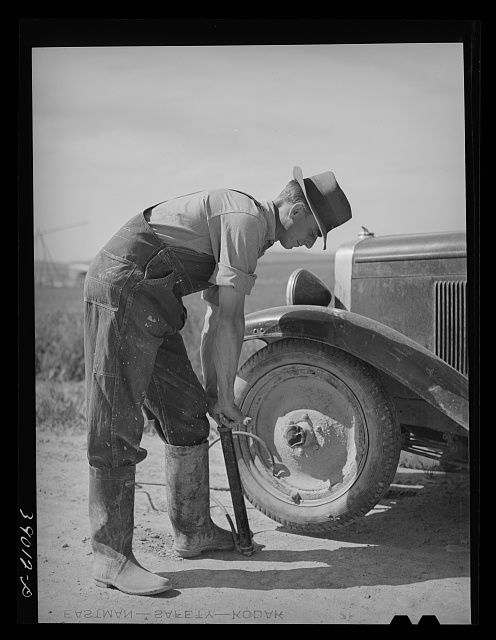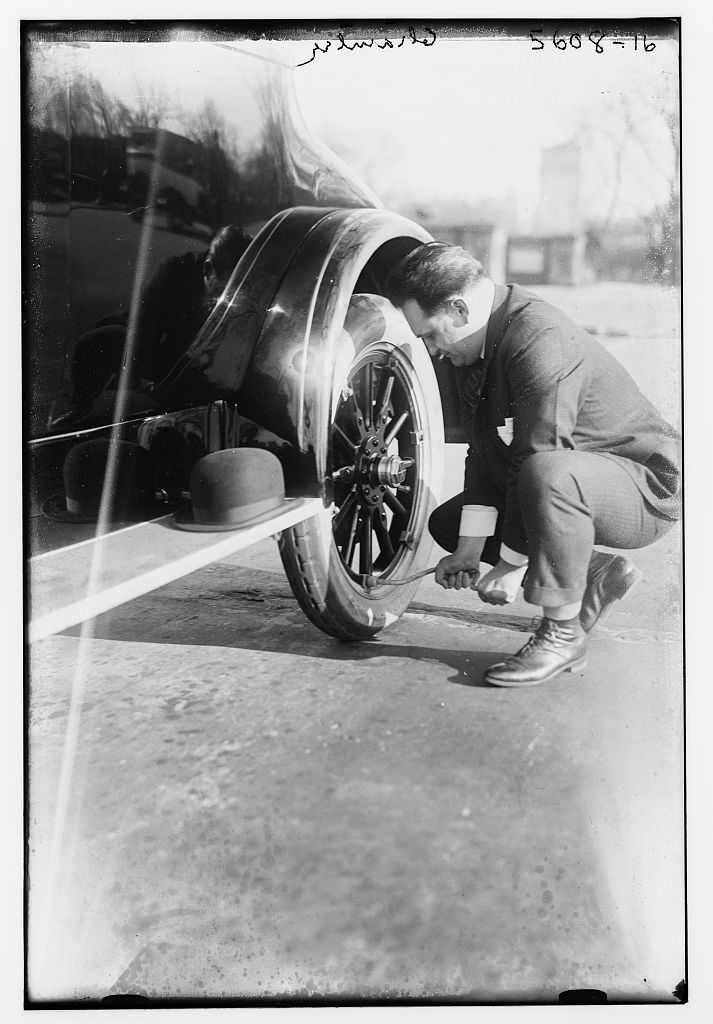This album was created by a member of the TPS Teachers Network, a professional social media network for educators, funded by a grant from the Library of Congress. For more information, visit tpsteachersnetwork.org.
Technical Difficulties - the stories behind the photos
Album Description
As many of you may have noticed, the Library’s website is sometimes out of service or has some technical difficulties.
While this is oftentimes frustrating, I have actually come to enjoy the photos that will appear from our collections, many times depicting people hard at work repairing or fixing something. It makes me think about our own technical support at the LOC who work tirelessly to fix and update our technology.
It has also gotten me thinking: who are these people? What are their stories? Here, I have attached some of their photos and the information I could find behind the photos (if you click through the album, you'll find the information with each picture!). Maybe next time they appear on your screen, you can think about the stories that lie within these photos and how they came to “work” on the Library’s website!
It might be interesting to compile photos of people at work and ask students what they notice about the photos. Hopefully some of these stories spark ideas for lessons and how we might talk about the evolution of working America.
Repairing government trucks [...] garage | Library of Congress
Teaching Notes
Run by George Harris and Martha Ewing, Harris & Ewing Inc. was a photography studio in Washington, DC. This studio photographed many important people, including President Theodore Roosevelt and President William Howard Taft (of which they are most popular for their The Anatomy of a Smile collection). While they photographed many prominent historical figures, Harris & Ewing also captured the lives of people, events, and architecture in Washington, DC. While I couldn’t find any specific information on the man in this photo, it was interesting to learn more about the studio that was responsible for this image.
Mike Sullinger, who has a farm near Carson, North Dakota, looking for rain | Library of Congress
Teaching Notes
This photo of Mike Sullinger is a part of the North Dakota Writers Projects files. The photos in this collection include “WPA buildings, road construction projects, images of drought, farming, irrigation projects, coal mining, 4-H activities, and agriculture students.” (https://www.history.nd.gov/archives/manuscripts/inventory/00075.html)
“The purpose of the Historical Data Project was to gather biographical and historical information on early settlers in North Dakota. To limit the scope of the survey, a "pioneer" was "defined as a person who was born before 1870 and who lived in Dakota Territory prior to the division into North and South Dakota, or as the first settler in a township." In addition, Historical Data Project personnel prepared historical sketches of North Dakota counties, cities, townships, agriculture, fraternal organizations, political parties, population, railroads, climate, natural resources, prominent citizens, etc., and prepared transcripts of early North Dakota county and township records having genealogical and historical value. The survey work of the Historical Data Project ceased in 1940.” (https://www.history.nd.gov/archives/manuscripts/inventory/00075.html)
Woman at Main Reading Room card catalog in the Library of Congress
Teaching Notes
By 1945, women made up 37% of the workforce, which was an increase of 27% since 1940. During this time, many women were domestic workers, clerical workers, sales/factory workers, teachers, and nurses. The woman in the photo here remains a mystery, but I wonder what her story is. I assume she also works at the Library and is cataloging books or other items. Here is another photo I find interesting from 1942, where Jewal Mazique can be seen cataloging as well.
You can learn more about the card catalogs at the Library of Congress here.
Auto repairs, Los Angeles digital file from original neg.
Teaching Notes
I find this photograph to be fascinating. This is an image of 3 women (unnamed and unknown - although, if the TPS Network members can find their identities, I would love to know) auto repair workers in Los Angeles, California during World War I. After some research, I learned that many women worked for automotive companies. In fact, an article from Henry Ford states, “The factories, short on men during war, employed women to work on the engines. It was said manufacturers preferred women in some of the work as they were more detail oriented and better suited to delicate work requiring a fine touch.” Women were crucial to the war efforts and to the American economy during this time. I would love to do more research about the efforts of women at this time and how they paved the way for women in the future.
Ray Halstead, FSA (Farm Security Admnistration) rehabilitation borrower, pumping up a tire. Dead Ox Flat, Malheur County, Oregon (1941)
Teaching Notes
Ray Halstead’s life was very well documented by photographer, Lee Russell. You can find more photographs of him here. The Farm Security Administration (FSA) was created in order to fight poverty in rural areas during the Great Depression. The FSA is known for its photography program, which documented the challenges many people faced in rural and impoverished communities in America. You may know one of the most famous photos from this time period, Dorothea Lange’s, Migrant Mother.
Chamlee [fixing tire]
Teaching Notes
"The George Grantham Bain Collection represents the photographic files of one of America's earliest news picture agencies. The collection richly documents sports events, theater, celebrities, crime, strikes, disasters, political activities including the woman suffrage campaign, conventions and public celebrations. The photographs Bain produced and gathered for distribution through his news service were worldwide in their coverage, but there was a special emphasis on life in New York City. The bulk of the collection dates from the 1900s to the mid-1920s, but scattered images can be found as early as the 1860s and as late as the 1930s."
Reference link: http://www.loc.gov/item/2014713657/
Reference note
Contributor Names: Bain News Service, publisher
Created / Published: [between ca. 1920 and ca. 1925]
Genre: Glass negatives
Notes: - Title from unverified data provided by the Bain News Service on the negatives or caption cards.
- Forms part of: George Grantham Bain Collection (Library of Congress).
- General information about the George Grantham Bain Collection is available at http://hdl.loc.gov/loc.pnp/pp.ggbain
Repository: Library of Congress Prints and Photographs Division Washington, D.C. 20540 USA http://hdl.loc.gov/loc.pnp/pp.print
Digital Id: ggbain 33505 //hdl.loc.gov/loc.pnp/ggbain.33505
